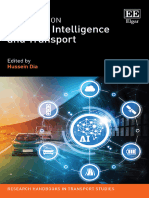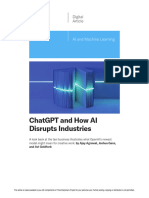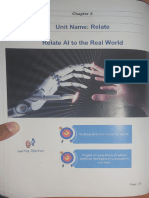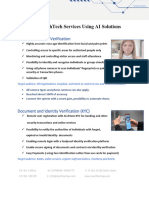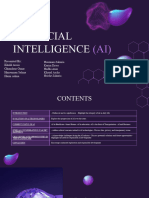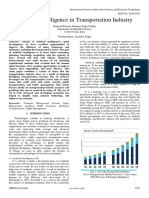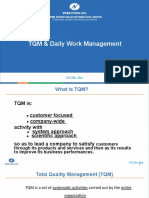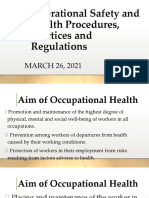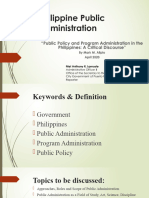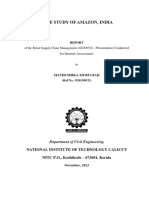Over the next decade, engineers expect air taxis to provide public transportation in metropolitan
areas. But before these futuristic vehicles can take flight, there are serious logistical issues to
solve. How many will be needed? Where should they take off and land? Where and when will
they recharge?
University of Missouri researcher Suchi Rajendran is tackling these questions — and more —
using prescriptive analytics, a powerful form of artificial intelligence (AI) that recommends
specific actions based on predictions.
To get started, Rajendran and her team gathered records from New York’s Taxi and Limousine
Commission to determine how many people are hailing traditional yellow taxis and where
they’re coming and going. They fed that historical data into a machine to predict how many of
those people might opt for air taxis instead, using another form of AI known as predictive
analytics.
After forecasting the demand, Rajendran is now leveraging prescriptive analytics to help make
decisions about how many air taxis to deploy, where air taxi stands should be built and how they
should be scheduled to make the most of the service.
“When it comes to prescriptive AI, we look at the predictions and think about what we do with
that information,” said Rajendran, an assistant professor in industrial and systems engineering
with a joint appointment in marketing. “By adjusting different factors such as how many taxis
are available and where they operate, we can measure how well a system will work in terms of
keeping air taxis busy and minimizing customer wait times.”
Until these advanced AI models run simulations to optimize operational details, air taxis could
remain grounded.
“It will take as much time to prepare for air taxi operations as it is taking to design and build
them,” she said.
Preparing for the next big thing
When ChatGPT launched in late 2022, few were prepared. Schools were caught off guard by the
sudden availability of an AI tool that could do homework. Employers struggled to ensure AI-
generated content didn’t infringe on copyright laws. And users balanced their reliance on the bot
against fears that it would replace their own creativity and talent.
With prescriptive analytics, humans will be able to better plan for those types of disruptive
technologies in the future.
“If we know something is on the horizon, such as air taxis, we can predict how it will impact us,
then prescribe solutions to best work with those technologies before they become
commonplace,” Rajendran said. “This is a case of AI helping us prepare for AI.”
And air taxis aren’t the only frontier where this specialized AI is making an impact. Across
various sectors — from manufacturing and health care to even animal welfare — Rajendran is
�using prescriptive analytics to foresee and overcome complex challenges while optimizing
decision-making.
One area of focus is furthering the adoption of electric vehicles (EVs). While it’s relatively easy
to drive an EV in cities where charging stations are readily available and commutes are short,
motorists are leerier of long-distance travel.
Rajendran is using prescriptive analytics to determine the best places to build EV charging
stations along highways and considering other solutions such as rapid charging capabilities that
would shorten wait times for truck drivers.
“With predictions based on historical data, we can use prescriptive analytics to make some
recommendations to improve the convenience and reliability of electric vehicles,” she said.
There are non-transportation examples, as well. Rajendran is also using prescriptive analytics to:
Optimize blood donation distribution to hospitals and clinics by forecasting demand peaks, such
as during weekends or months when accidents increase.
Match pets with potential adopters based on geographic and seasonal preferences, ensuring
animals are transferred to shelters where they are more likely to find a home.
Identify patients at high risk for spinal disc degradation and provide preventative care advice
based on factors linked to the disorder.
Rajendran is also preparing the next generation to harness the power of prescriptive analytics.
Through a Research Experiences for Undergraduates (REU) program funded by the National
Science Foundation, she brings 10 students to campus each summer to tackle real-world
challenges across sectors — ensuring AI will continue to shape smarter, more efficient
industries.


